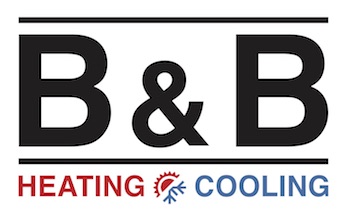Everyone’s always looking to save money on their utility bills, but it turns out there’s a way to lower energy use, even when you’re not even home.
The secret is your thermostat. By using automatic schedules, you can tailor the temperature to your needs. You can create a number of automated temperature settings for when you’re at home, away or even when you’re asleep.
If you’re willing to make these adjustments, you have more time to enjoy pleasant temperatures while keeping more money in your pocket. Take a look at a few ways your thermostat can save you money in the summer:
While at Home
Whenever you’re at home, you want comfortable temperatures. It’s only natural to want your thermostat lower in the summer while you are in the house to make the most of the cool air.
But the most energy-efficient temperatures for the summer is in fact anywhere between 78 and 80 degrees Fahrenheit. This way, you’ll avoid the worst of summer while keeping your energy bill more manageable.
While Gone
When it comes to setting the temperature for when you are out of the house in summer, the majority of homeowners will set the thermostat higher for while they’re gone.
For some homes, you can set the thermostat to higher temperatures like 88 degrees while no one is home before you adjust it back to the sweet spot of 78-80 degrees once you’re home again. This way, your air conditioning system isn’t working around the clock to cool an empty house.
While Sleeping
When it comes to sleeping in the summer, you want a nice cool temperature. A great place to start is between 68-72 degrees Fahrenheit. There’s less risk of getting too hot or too cold while you’re trying to sleep.
Other Ways to Use Less Energy:
- Put in a smart thermostat: Using a smart thermostat in the summer can lower energy costs as it forms temperature schedules according to your lifestyle and personal preferences. It’ll take care of making changes while you are home or sleeping, while allowing it to get warmer when the house is empty. With models like the Lennox iComfort, you have the ability to remotely access and change the temperature through your smartphone, tablet or laptop. Requesting smart thermostat installation in your Florissant and St. Charles home is an effortless way to set the correct temperature even when you aren’t home.
- Replace current equipment with a newer HVAC system: A new HVAC system saves money right from the start. By investing in a more energy-efficient system, your utility bills will be lower because it requires less energy to heat and cool your home. Air conditioning installation in Florissant and St. Charles is a great way to beat the heat in the summer.
- Stay on top of routine AC maintenance: Whether or not you keep up with regular air conditioning maintenance in Florissant and St. Charles can have a serious effect on your total monthly energy use. If you stay on top of cleaning key components like the coils, checking for damage and clearing ventilation of dust and debris, this can help your HVAC system run more efficiently. More efficient operation reduces strain on the unit and lowers operational costs, leading to lower energy usage, which translates into lower energy bills.
- Clean or replace the air filter on a regular basis: Regularly changing the air filters in your HVAC system saves money by keeping airflow as smooth and consistent as possible. When filters are clogged with dirt and debris, your air conditioner will have to work harder, and the added strain may impact the system’s life span and result in breakdowns.
- Confirm your attic is sufficiently insulated: Insulation is a crucial component for any energy-efficient home, keeping the hot air outside and the cool air inside over the summer. The North American Insulation Manufacturers Association (NAIMA) recommends that homes in the southern United States should have at least 13-14 inches of insulation, while states further north need 16-18 inches.
- Review your air ducts: A leak in the air ducts could increase your energy bills much more than 20 percent, plus it can also lead to problems with your water heater, clothes dryer and other appliances to get into the atmosphere of your home. Watching for signs of leaks and sealing them can fix both of those problems.
- Seal all other leaky spots in your home: Finding and sealing any remaining leaks in your home with caulk, foam sealant or weather-stripping can help keep it cooler on hot summer days. You should also check for any gaps around windows, doors and even outdoor fixtures. Devoting time and effort to sealing leaks now can help you save a lot in the long term.
